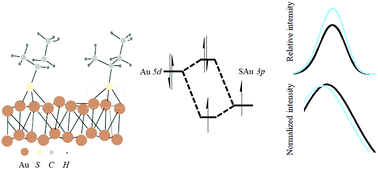Short chain thiols induce better plasmon resonance sensitivity in Au(111)
Abstract
Plasmon electron transfer from a metal is a fundamental paradigm for sensing. Sulfur capped gold showed a behavior influenced by the interface between Au and S atoms, where there exists a sensitive balance between the forces that direct these different interface structures. This avoids the creation of an intermediate state, enabling the decay of a plasmon by directly exciting an electron from the metal to the strongly coupled acceptor. Here, we investigate the plasmonic behavior of pristine and thiol-capped Au by quantifying the influence of chemical interface damping on the linewidth as well as the peak shift. Ligands with different electron withdrawing and electron donating powers are bound to gold and their effects on measured plasmons are studied. The experiments investigate the electron withdrawing power of the NH3+ tail group of cysteamine, with opposite results already known for the alkanes. These changes as expected for Au(0)–thiyl bonding, and they affect the metal-to-ligand charge transfer band interface, which then interferes with the plasmon to create the observed effects. In conclusion, it has been proven that the optical characteristic of the cysteamine-capped Au reflects a higher sensitivity for the detection of glycerol and a solution of propan-2-ol.



 Please wait while we load your content...
Please wait while we load your content...